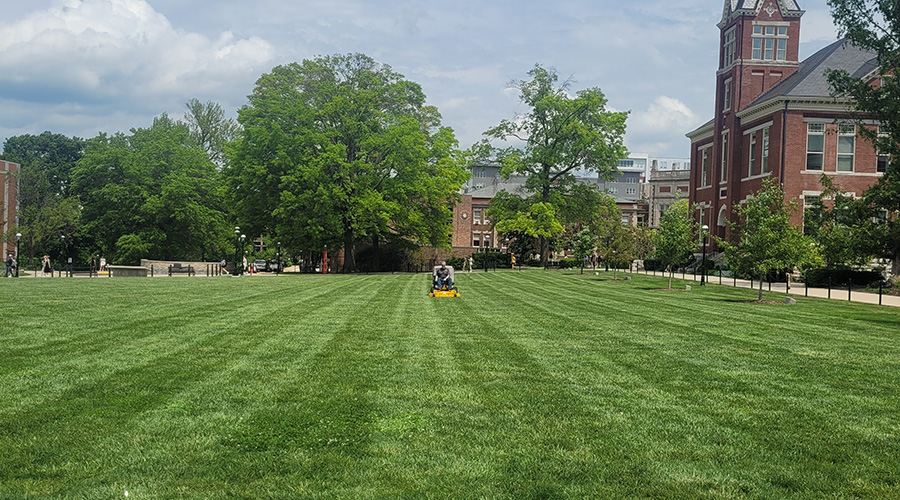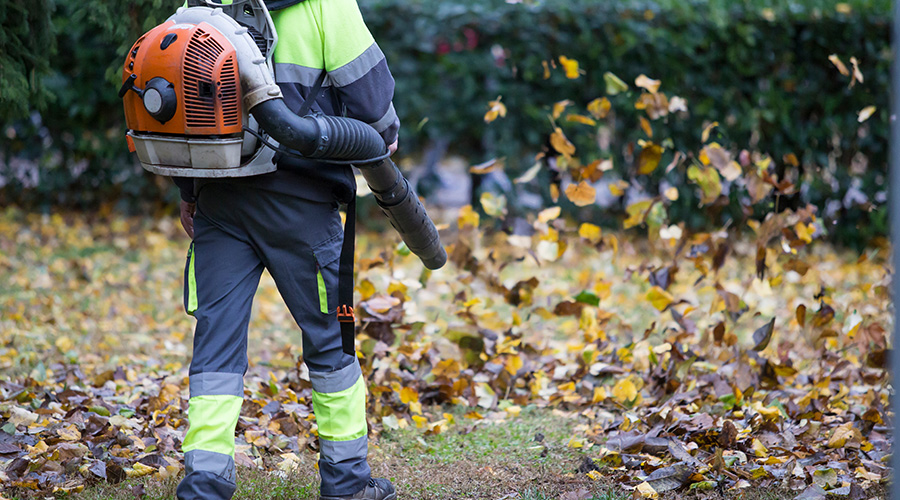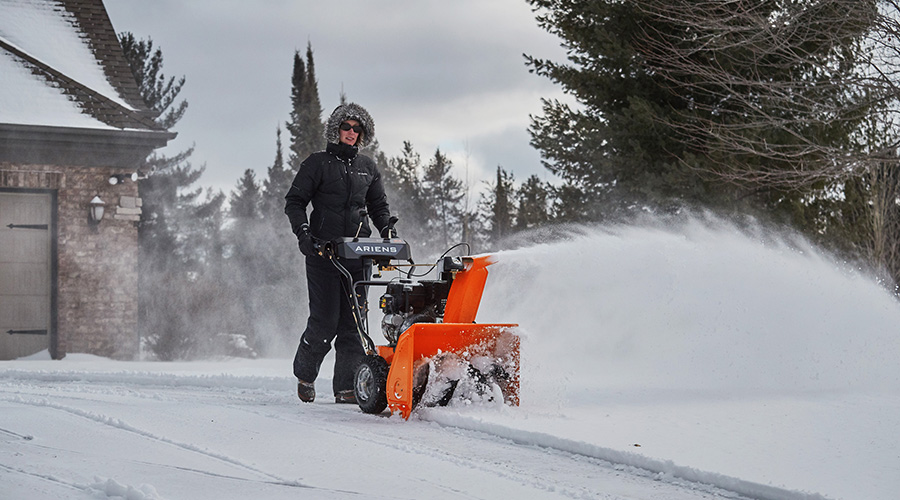Include Crew Preparation in Fall, Winter Planning
With equipment and plants accounted for, managers next can turn to the essential steps in preparing crews for their fall and winter responsibilities.
"Snow removal and inclement weather procedures and responsibilities are reviewed with staff," Woodell says. "Emergency heating procedures for greenhouses are reviewed. As newer staff is exposed to seasonal tasks, procedures and safety measures are reviewed and someone works with them for training."
New employees unfamiliar with both the equipment and the terrain can present a particular planning challenge for managers.
"Training is a key component for new people who come into the snow plan, so we use our group leaders — the people who are actually out in the field — to help train these new employees on how to operate the pieces of equipment," Dobbs says. "It's also important that we map out their route so they actually have a picture of their route. We do spend a fair amount of time preparing for the winter and training staff on how to respond to winter."
In some cases, part of that response training falls to department supervisors.
"At Michigan State, each supervisor was responsible for a certain component of the snow plan," Dobbs says. "One supervisor was responsible for the sidewalks and worked with the crews responsible for taking care of the sidewalks. One supervisor was responsible for parking lots, and there were over 26,000 parking spaces on the campus. He worked with the crews to make sure they understood their responsibilities, and he was the go-to person if they had any issues. One supervisor was responsible for the mechanics and for the salt-truck operators that were taking care of the roadways."
As institutional and commercial facilities tear down outdated buildings, construct new ones in their place and otherwise alter the landscape, managers need to incorporate changes — both small and large — into their planning and procedures. For this phase, they also can rely on their staffs, as well as
other departments.
"We ask the front-line staff to make us aware of any changes," Dobbs says. "For the two universities I worked at, it also was extremely important to keep close ties with engineering and architectural group so we were aware of any road changes or any construction changes that are important so we can adjust our snow-removal schedule. It was also important for us to have a working relationship with the police department at both universities. We also worked with security, as well. From them, we learned the primary road access we needed to open up first, as well as sidewalk access."
One challenge that is a particular concern for facilities that must deal with snow is determining where, exactly, plows should put it.
"The biggest challenge we had to deal with in the Midwest was, what do you do with the excess snow," Dobbs says. "When I arrived at Michigan State, we were hiring dump trucks and hauling it away to farmland.
"We worked out something with the parks and services (department) so we could make large piles of snow in the corners of parking lots. What they cared about was keeping 80 percent of their parking lots open. They didn't mind giving up a portion of it. Then we would put those sites on a map so equipment operators would know where to push the snow. And before snow season, we would put up signage saying that this area will be for snow piles."
As fall slowly becomes winter, managers can put the remainder of their preparation and planning into full use.
"Tropical plants and other tender plants are removed and stored inside greenhouses before first frost," Woodell says. "When water temperatures drop — usually October — we remove tropical water plants from pools. Summer annuals are removed and replaced with fall chrysanthemums. In mid-November, spring bulbs such as tulips, daffodils and hyacinths are planted for spring bloom. Also in November, winter work lists are created for the next four months, and work is prioritized and equipment coordinated.
"Winter is usually when we take care of large tree plantings and larger landscape maintenance projects. This is not ideally the proper time horticulturally to perform these tasks, but it works best for us because there are fewer guests on the estate. Plants are ordered for projects and planning, coordinating, and scheduling is also done."
Related Topics:














